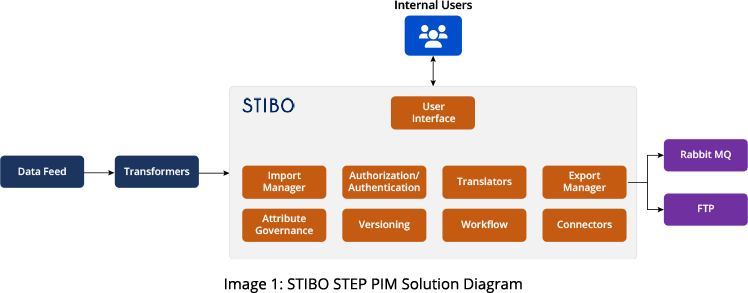After carefully analyzing company requirements, our Application Development and QE teams decided to integrate the Stibo Systems Enterprise Platform (STEP) for product information management. STEP is a proven and open platform that handles product management across multiple systems.
Here is a list of Stibo Systems PIM features our teams implemented:
| Feature | Description |
|---|---|
| Import Manager | Creates products from external XML feeds. |
| Attribute / Attribute Values | Manages predefined, dynamic, and calculated attributes and their values. These attributes are reusable and help in providing rich product data. |
| Workflow | Reviews product enrichment and provides an approval chain. |
| Translators | Translates content into a configurable list of languages. |
| Authentication / Authorization | Facilitates PIM access control. |
| Export Manager | Reformats and exports products and attribute data for downstream system consumption. |
| Transformers | Java-based logic that transforms product data that originates from different input sources into a single unified format acceptable to the Stibo Systems PIM. |
| Delivery Connectors | Supports bulk and real-time data transfers to downstream systems. |
Our Stibo PIM implementation provides data to downstream systems using Rabbit MQ, producing streaming data on demand. Our team also provided an FTP (File Transfer Protocol) endpoint for consumption by legacy systems. They followed Agile best practices in development and used Jira for the issue and project tracking.

Key takeaways from the solution:
- Comprehensive product information management: Previously, each vendor provided its own attributes, making it difficult to get a comprehensive view of product data. Administrators can now manage attribute mapping in the new system, providing comprehensive product information for user consumption.
- On-demand omnichannel product data: The company can now provide product data on-demand across all its channels.
- Expanded reporting: Previously, if the company had not published a product on any of its channels, it could not obtain information on the product’s status. Draft-stage product information is now available. In addition, reporting based upon any configuration product attributes is also available.


